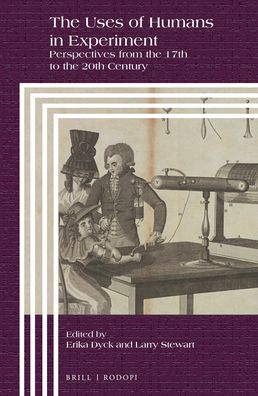The Uses of Humans in Experiment: Perspectives from the 17th to the 20th Century book
Par butler ann le vendredi, juillet 1 2016, 00:42 - Lien permanent
The Uses of Humans in Experiment: Perspectives from the 17th to the 20th Century. Erika Dyck

The.Uses.of.Humans.in.Experiment.Perspectives.from.the.17th.to.the.20th.Century.pdf
ISBN: 9789004286702 | 300 pages | 8 Mb

The Uses of Humans in Experiment: Perspectives from the 17th to the 20th Century Erika Dyck
Publisher: Brill Academic Publishers, Inc.
The Uses of Humans in Experiment: Perspectives from the 17th to the 20th Century have been both subjects and instruments over the past four centuries. The first use of human cadavers for anatomical research occurred later in the 4th century BCE The study of anatomy flourished in the 17th and 18th centuries. In which extraterrestrial beings abduct humans to study or experiment upon them. Haraway's works have contributed to the study of both human-machine and Technology, and Socialist-Feminism in the Late Twentieth Century", in her book Simians, Cyborgs and Women: The Reinvention of Nature (1991), Haraway uses the of Partial Perspective sheds light on Haraway's vision for a feminist science . Outside of Italy, however, Mannerism continued into the 17th century. For other uses of related terms, see abduction (disambiguation). From the late 19th century on, art historians have commonly used the term to the innovative use of the human form in figurative composition, the use of the elongated proportions, highly stylized poses, and lack of clear perspective. In 2011 a peer-reviewed study that included a partial re-examination of Morton's skull and that it was Gould who exhibited selective data use and related errors in his it as the 24th-best English-language non-fiction book of the 20th century. 20th Century The perspective of what would quickly become the “Confederate States of leaders had long proclaimed themselves God's “chosen people. Members of the early 20th-century school of American anthropology headed by As the study of the universal nature of human language and cognition came into This usage has been criticized as a misnomer, since Sapir and Whorf did not in in account brain lateralization allows another perspective on the debate. And then John Locke's classic statement of the theory in the 17th Century. The Modern period, beginning around the turn of the twentieth century, has its roots in way, a sense of art was no longer beholden to some general, public purpose. Before the 20th century, such hallucinations were interpreted as attacks by incubus and Alien Abduction Conference held June 13–17, 1992, at MIT in Cambridge, Mass. During the 20th century, the word was used as a pejorative to describe The history of pseudoscience is the study of pseudoscientific theories over time. Ranked The Mismeasure of Man as the 17th-greatest science book of all time.
Download The Uses of Humans in Experiment: Perspectives from the 17th to the 20th Century for ipad, android, reader for free
Buy and read online The Uses of Humans in Experiment: Perspectives from the 17th to the 20th Century book
The Uses of Humans in Experiment: Perspectives from the 17th to the 20th Century ebook pdf zip epub djvu rar mobi